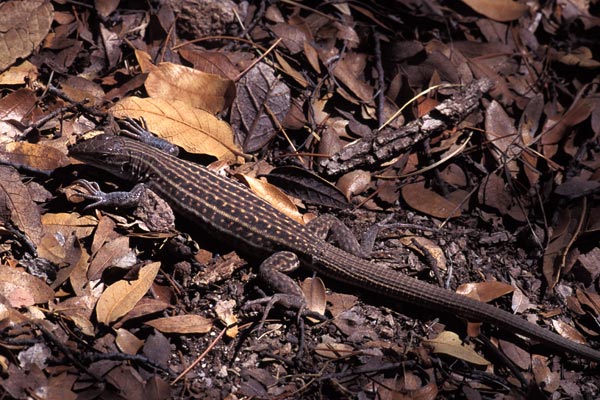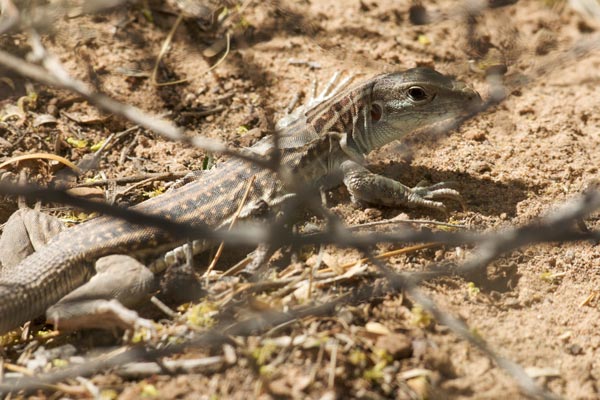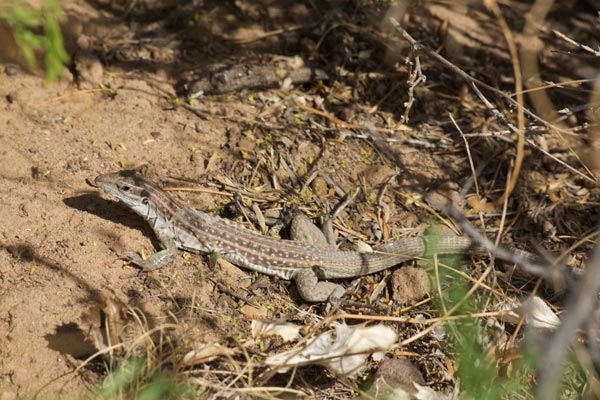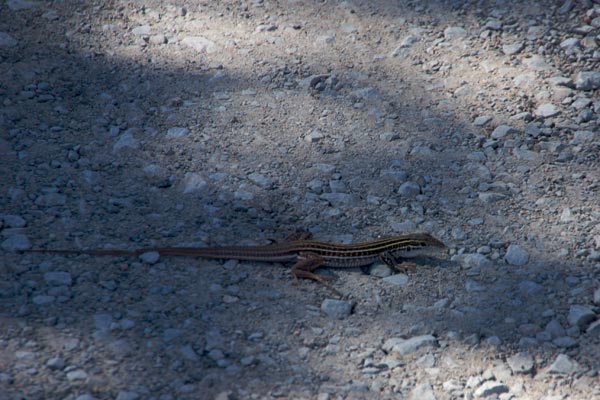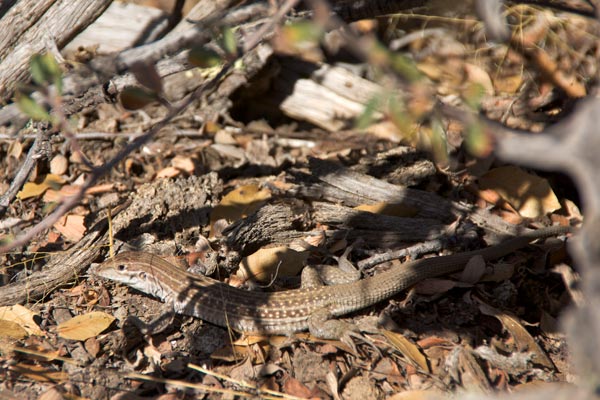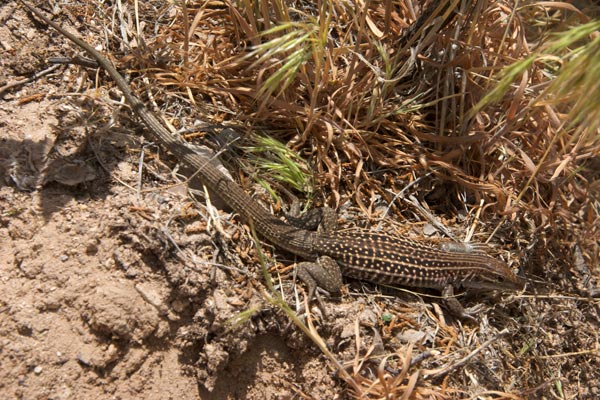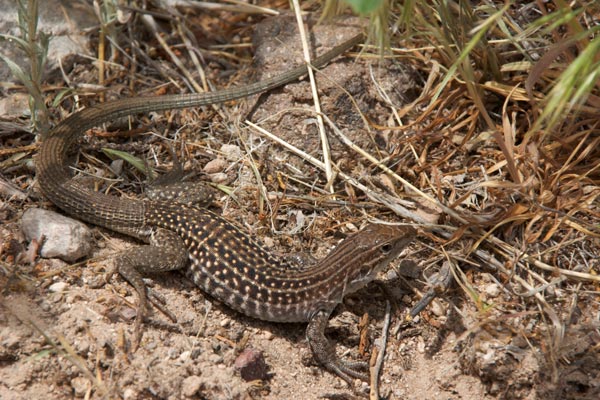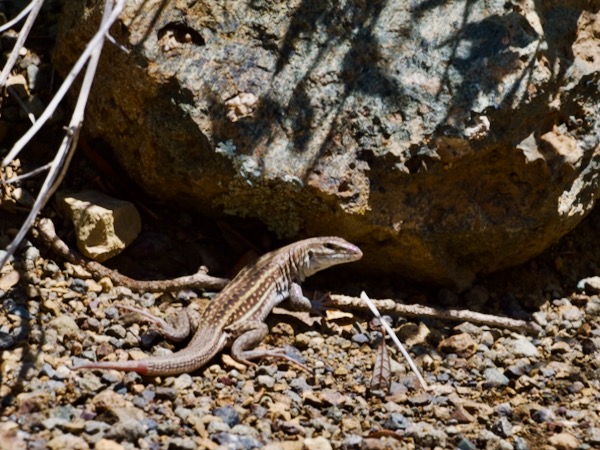Aspidoscelis exsanguis
—
Chihuahuan Spotted Whiptail
This is one of the several (exact number changes periodically as herpetologists classify and reclassify) all-female whiptail species that reproduce parthenogetically. Certainly a rarity in vertebrates, this trait makes these species very interesting to researchers.
We saw a few of these whiptails mixed in with the dozens of Mountain Spiny Lizards that festoon the Chiricahua National Monument. Like most whiptails, they were generally nervous, twitchy lizards, but they had a greater tendency to rest in plain sight for awhile than even twitchier species like the Western Whiptail. One of them actually tiptoed over and licked my camera's tripod a couple of times before settling down in the space between my shoes.
This species was placed in the genus Cnemidophorus until recently, so most reference books still use that name.
Valley of Fires State Park, Lincoln County, New Mexico—May 21, 2008
My sister noticed this large whiptail in the midst of shedding its skin as it snooped around in the bushes near our campsite. I was surprised not to see any others, because typically when one sees one whiptail, one sees a lot of whiptails. Perhaps the horrific winds had something to do with it; by mid-afternoon it was so windy that we shut ourselves into our little RV for the rest of the day.
near Silver City, Grant County, New Mexico—May 11, 2009
The more I see this species, the more I like them, because they do seem to be much more apt than other whiptail species to stay still for long enough that I can get a few photos.
near Silver City, Grant County, New Mexico—May 14, 2009
A paler-than-average individual. It got spooked off by our dogs before I had a chance to get better photos.
Kasha-Katuwe Tent Rocks National Monument, Sandoval County, New Mexico—May 16, 2009
Kasha-Katuwe Tent Rocks National Monument is a little-known but amazing spot not too far from Santa Fe, full of slot canyons and odd-shaped rock formations. We had climbed up to the scenic overlook part of the trail on a day that started out too cool for any lizardy activity, but on our way back down these whiptails started popping up.
New Mexico has quite a variety of whiptail species. These were much larger than any A. exsanguis that I'd seen before, and looked subtly different than the others I'd seen, so at first I thought they might be some other species. But after looking through various books I couldn't find any other candidates.
Chiricahua Mountains, Cochise County, Arizona—August 8, 2022
Working on a new tail.
Printed references:
- Behler, J. L., King, F. W. 1979. The Audubon Society Field Guide to North American Reptiles & Amphibians
- Brennan, T. C. and Holycross, A. T. 2006. A Field Guide to Amphibians and Reptiles in Arizona
- Crother, B. I. (ed.) 2017. Scientific and Standard English Names of Amphibians and Reptiles of North America North of Mexico, with Comments Regarding Confidence in Our Understanding, Eighth Edition
- Degenhardt, W. G., Painter, C. W., Price, A. H. 1996. Amphibians & Reptiles of New Mexico
- Smith, H. M., Brodie, E. D. Jr. 1982. Reptiles of North America: A Guide to Field Identification
- Stebbins, R. C. 2003. Peterson Field Guide to Western Reptiles and Amphibians, Third Edition
